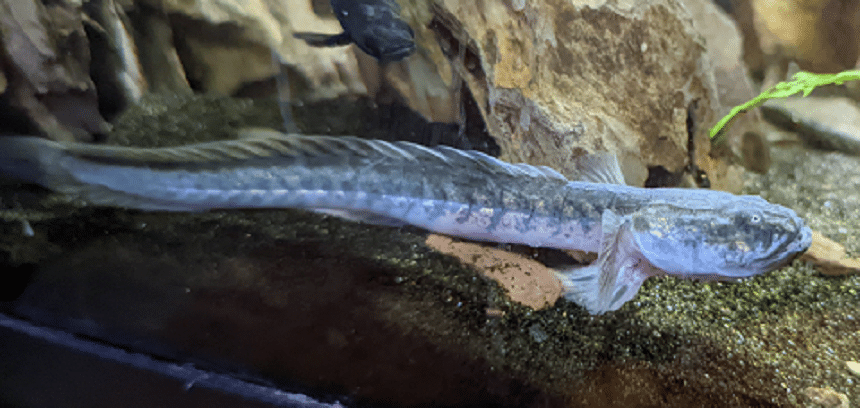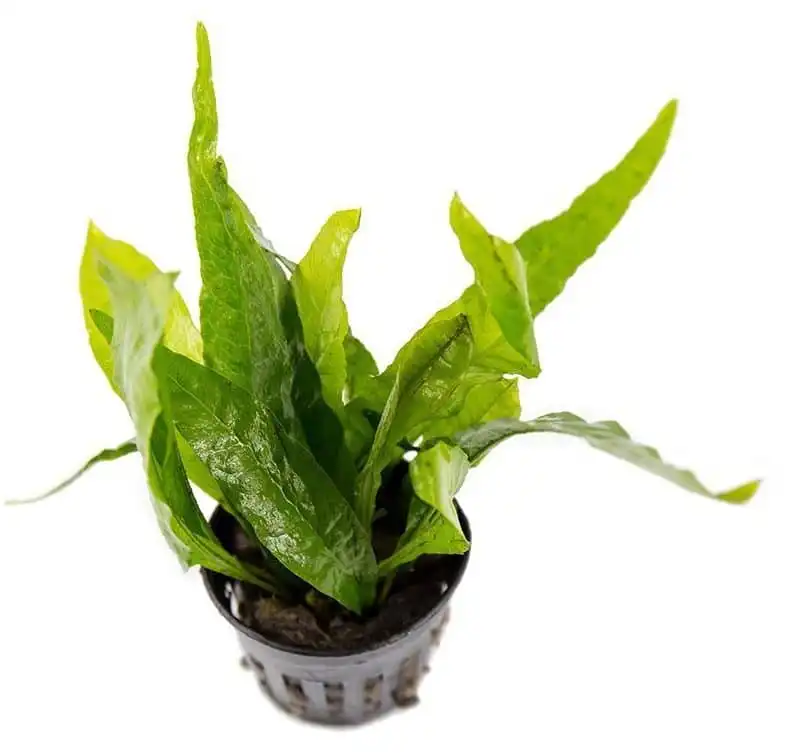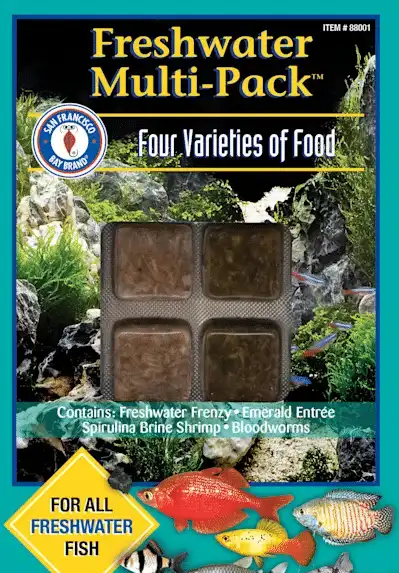Thank you for visiting! By the way… any links on this page that lead to products on Amazon and other stores/partners are affiliate links Aquarium Store Depot earns a commission if you make a purchase.
Are you looking for an aquarium fish that is unique and needs special care? If so, dragon gobies are perfect! These brackish water fish have a very eel-like appearance and add intrigue to any home aquarium. This guide will give you all the details on their origin, habitat requirements, characteristics, and other tips needed to ensure your little dragons thrive in captivity.
Key Takeaways
- Dragon Gobies are freshwater aquarium fish from the Atlantic coast (usually) with a lifespan of up to 10 years.
- Caring for your Dragon Goby involves providing an appropriate environment, suitable tank mates, and a high-protein varied diet.
- Breeding them requires setting up separate tanks and caring for eggs/fry with small live foods.
Species Overview
| Scientific Name | Gobioides broussonnetii |
| Common Names | Dragon Goby, Dragon Gobys, Violet Goby, Dragonfish |
| Family | Gobiidae |
| Origin | Western Atlantic, South America, Or Gulf Coast |
| Diet | Omnivore |
| Care Level | Moderate |
| Activity | Low to Moderate |
| Lifespan | 6 – 10 years |
| Temperament | Peaceful (Aggressive to own kind) |
| Tank Level | Bottom Dwelling |
| Minimum Tank Size | 55 gallons (needs a 4 foot long tank) |
| Water Temperature Range | 72-78 F (22-25 C) |
| Water Hardness | 10-20 dKH |
| pH Range | 6.5-8.5 |
| Filtration/Water Flow | Moderate |
| Water Type | Brackish |
| Salinity | 1.005 – 1.010 |
| Breeding | Rarely observed |
| Difficulty to Breed | Very difficult |
| Compatibility | Peaceful fish of similar size |
| OK, for Planted Tanks? | With caution |
Introduction
Dragon Gobies (Gobioides broussonnetii), also known as Dragon Fish or Violet Gobies, are not a common fish you’d find in any ordinary freshwater aquarium. These curious creatures come from the brackish waters of Atlantic coast estuaries and bays, an environment which is distinct compared to that for other species. So while taking care of them may take more effort than usual, it’s worth every bit when they grace your tank with their fascinating presence!
Are you keen on venturing into caring for these amazing Dragon Goby? To start off this exciting journey, let us learn about where these remarkable animals come from originally.
Origin And Habitat
Dragon Gobies, native to estuaries and bays along the Atlantic coast of South Carolina up to Central America’s Amazon River Basin (some even come from the Gulf of Mexico), require brackish waters in order for them to thrive. In these environments, they can be seen lurking near muddy bottoms during night-time hunts for food while hiding away through daylight hours.
To create an adequate home aquarium environment that mimics their natural habitat is crucial when caring for this species of fish as it permits full expression of its behaviors and appearance. Attention must also be paid when attempting to replicate its environment since Dragon Gobies are tailored well into life within brackish water habitats.
Physical Characteristics

Dragon Gobies are truly unique in their eel-like shape and attractive coloration, which can range from grey or brown to a stunning silver blue with yellow patches when kept under optimal conditions within the brackish water aquarium. They almost have a prehistoric like look to them, which adds to their appeal.
These fish also have sharp teeth that they use for eating small invertebrates as well as debris found in natural habitats. Their ventral fins enable them to remain stationary on rocks and foliage while scavenging for food sources too. When wanting to differentiate between male and female Dragon Gobies, look at the genital papilla1. This papilla is a small, fleshy tube behind the anus. Males possess more pointed ones than females who have shorter but yellower versions of this structure.
Lifespan
Dragon Gobies are renowned for their hardiness and adaptability, making them a rewarding addition to any aquarium with the right aquarium water conditions. To ensure that these creatures have an extended life expectancy of up to 10 years in captivity, they must be provided with quality care as well as nourishment from frozen brine shrimp or other suitable food sources. Compatible tank mates that won’t stress them out and having a longer tank that can provide enough surface space will help greatly.
Average Size
Dragon Gobies are an impressive species of fish that can reach a maximum length of 24 inches in the wild, making them one of the biggest among gobies. When kept as pets, their growth tends to be slower and they typically measure around 12 inches long. Beside of their size and their bottom dwelling nature, longer tanks are preferred for them.
Caring For Your Dragon Goby
The care of a Dragon Goby (AKA Violet Goby) requires an understanding of their brackish water needs, which can be difficult to meet in a standard freshwater aquarium. Providing the right environment with hiding places for them and sand substrates is critical for keeping your fish healthy and content. It’s imperative that they receive proper nutrition from a varied diet as well as have suitable tank mates – something mentioned before when we discussed these creatures’ requirements. Let’s look into acquiring the right tank size for them.
Tank Setup Requirements
When it comes to an aquarium for these fish, it’s more about the surface space of the bottom of the tank over gallon size. These fish are bottom dwellers and don’t do as well in tall tanks. They should be housed in tanks at least 48 inches in length, with a 60 gallon breeder or 75 gallon tank being the recommended tank size for them. This size offers plenty of room to swim and maneuver as well as places to hide away. Opting for a horizontal format will give them even more space to establish their territory.
This new 60 gallon breeder by Aqueon has the length and width of a 75 gallon tank, but at a shorter height. This is the most economical and effective 4 foot gallon tank for the saltwater hobby now.
That being said, Dragon gobies are fairly peaceful except for members of their own species once they reach adulthood. In order to house more than one in the tank, you will need at least a 6 foot long tank.
Choosing an appropriate substrate a sand base (we will cover this more later in the post) being the most suitable as it mimics its natural environment.
Substrate And Decorations
As previously mentioned, an ideal tank for your Dragon Goby would include a dark sandy substrate that allows them to burrow and hide comfortably. Adding aragonite can also help regulate the hardness and alkalinity of the water, which are necessary elements for proper water conditions in order to keep your fish healthy.
When it comes to decorating their habitat, you should opt for rocks, driftwood or live plants as these will give natural hiding places while creating more aesthetic appeal than other decorations such as sharp coral pieces. As sensitive skinned creatures, they must be protected from scraping against rough surfaces, which could lead to injuries and infections.
Keep in mind that because of their shifting nature, rooted plants are going to be a bad idea. Attempt to use plants that are column feeders, like Java fern or Anubias as they feed on the water column and can tolerate hard water.
Java Fern is one of the easiest and hardiest live plants you can purchase
Water Requirements (Water Parameters)
Dragon Gobies are a brackish water species that require specific conditions for health and well-being. The ideal temperature is between 78° and 82° Fahrenheit with pH ranging from 6.5 to 8.5. Saline levels should be kept 1.006 -1.008 as these parameters create an appropriate environment for them to thrive in correctly maintained cleanliness through effective filtration systems being paramount too!
Poorly managed quality of the aquatic world can lead your Dragon Gooby straight to disease, or worse, so regular monitoring of water changes as needed will help. Try to keep your water quality at these levels and do water changes if you see anything wrong when you test:
Feeding
Dragon Gobies shift sand to get food in the wild and will do the same in your aquarium. However, they shift sand in the world to eat microfauna, which is typically not going to exist in a fish tank. As such, you will need to feed your goby prepared foods so it can get enough to eat.
As carnivores and scavengers, these creatures demand high amounts of protein for optimal development. To make sure they stay vibrant in color and full of energy, offering different types of fish foods will guarantee that all nutrients are consumed properly.
Feeding Frequency And Food Options
Dragon Gobies need to be fed once daily with a wide selection of small food items. Good choices include flakes, pellets that sink, algae wafers, bloodworms, and tubifex worms, as well as baby brine shrimp and vegetable pieces cut into tiny sizes. This variety in their diet provides them with all the necessary nutrients they require for optimal health.
This frozen food pack contains 4 types of formulas in one package. A great overall package for freshwater fish
It’s important to keep an eye on your dragon gobby’s throat size while feeding – it can make it hard for them if large chunks are given – so ensure only smaller portions which will not cause any difficulty during feeding time! Feeding should happen at night when these creatures tend to be more awake and eager eaters than normal daylight hours would dictate. By offering the right kind of foods tailored specifically for nighttime consumption, you can maintain your goby’s well being through a carefully managed nutrition schedule!
Social Behavior And Tank Mates
The social behavior and choice of tank mates are key to the successful upkeep of a Dragon Goby. Whilst these fish tend to be territorial, getting along with other goby species or aggressive fish can prove difficult. Members of their own species they will fight with and aggressive fish will bully them. The sweet spot is finding fish that are relatively peaceful that they can’t fit in their own mouths and won’t occupy the bottom of the tank.
Suitable Tank Mates

When selecting a suitable tank for your Dragon Goby, it is essential to select peaceful and moderate-sized fish that won’t fight over resources or space. Possible companions include:
- Archerfish
- Swordtails
- Mollies
- Orange Chromide
One must be careful not to keep large predators with the dragon goby nor house them in an aquarium occupied by overly aggressive fish. Some blogs will also mention that you can keep other fish like guppy fish and platies with with your dragon fish. However, they are these are smaller fish and I believe Mollies and Swordtails are a better fit for the long term.
Breeding Challenges
Raising Dragon Gobies can be a rewarding pursuit for aquarists who are willing to give them the necessary attention and care. By providing optimal conditions in their habitat, it is possible to reproduce these remarkable fish under captive conditions successfully. However, it is very difficult to do for most aquarists as it requires a large tank. Still, I’ll explain what’s involved if you do happen to have a long enough tank to pull it and you are interested in trying.
Caring For Eggs And Fry
For optimal breeding of Dragon Gobies, the suggested ratio is 3 females for each male. Their food intake should be reduced temporarily and then gradually increased with live food to condition them before setting up a tank in semi-darkness and sand as a substrate, which will help encourage spawning.
Optimal water conditions are necessary when it comes to nurturing these fry. Temperature ranging from 78 – 82°F while pH levels between 7.5 – 8.5. Providing plenty of small live foods such as baby brine shrimp, microworms or Daphnia would assure healthy growth and development among freshwater fish species like these guys here!
That being said, most Dragon fish you purchase in pet stores will be wild caught as breeding is very difficult to do. I highly encourage you to seek guidance from a local breeder or your local aquarium society to see if anyone local has tried.
Common Health Issues
Dragon fish are mostly hardy but are prone to diseases if placed in a high stress environment or if a breakout occurs. Ich is the most common. They also can get fin rot if semi-aggressive or aggressive tank mates nip their fins. Bacterial infections will often occur if you place two gobies together, as injuries could be severe enough for an infection to take place.
Frequently Asked Questions
How big do Dragon Gobies get?
Dragon Gobies can grow quite large when living in the wild, with some reaching a size of 24 inches. When kept as pets, they tend to max out at 15 inches. This is contingent on tank size, however.
Can Dragon Gobies live in freshwater?
Dragon Gobies are quite versatile, meaning they can live in both freshwater and brackish/marine aquariums. They have the ability to adjust their living environment so it’s feasible for them to exist within any water conditions. However, care must be taken, and you should know the water parameters they are housed in before attempting. It’s safe to assume they are being kept in brackish water parameters.
What can live with a dragon goby?
When searching for fish to join a Dragon Goby in the tank, it is important to choose species that are of medium size and peaceful temperament since this type of goby is quite shy yet big enough to eat smaller fish. It’s best to opt for those living in brackish water environments as well. Mollies and Swordtails are two of the best candidates to house with Dragon Gobies.
What is the lifespan of a dragon goby?
The lifespan of dragon gobies kept in captivity has been known to last up to 10 years on average. Some owners have had the privilege of witnessing their fish thrive even beyond this point. It is possible for these aquatic creatures to survive for longer than a decade when cared for properly by experienced aquarists.
What is the ideal tank size for a single Dragon Goby?
A 4 foot long tank is recommended with a 60 breeder or 75 gallon tank being the best fit for them. Some blogs you may come across say 25 gallons. I will tell you right now that these writers are confused as they are referring to the saltwater fish of the same name that can live in a 30 gallon tank. This fish WILL NOT do well in a 25 gallon tank. It grows a foot long and will become highly territorial in a cramped space as it becomes an adult!
Closing Thoughts
Owning Dragon Gobies can be an incredibly rewarding experience for any aquarist, especially those who enjoy keeping brackish water tanks. This species boasts a dazzling appearance and intriguing behavior that often makes them the center of conversation in most aquariums. Proper care must be taken into account if you want to keep your Dragon Goby healthy. With time and dedication, anyone can foster a successful environment where they are sure to thrive.
Do you have a Dragon Goby in your aquarium? Let us know your experience in the comments. We love to hear from our readers and interact with them. Until next time!
- About the Author
- Latest Posts
I’m thrilled that you found Aquarium Store Depot! Here you’ll find information on fish, aquariums, and all things aquatics related. I’m a hobbyist (being doing this since I was 11) and here to help other hobbyists thrive with their aquariums! I adhere to a high quality Editorial Process and Review products with real life field usage and practical analysis.








